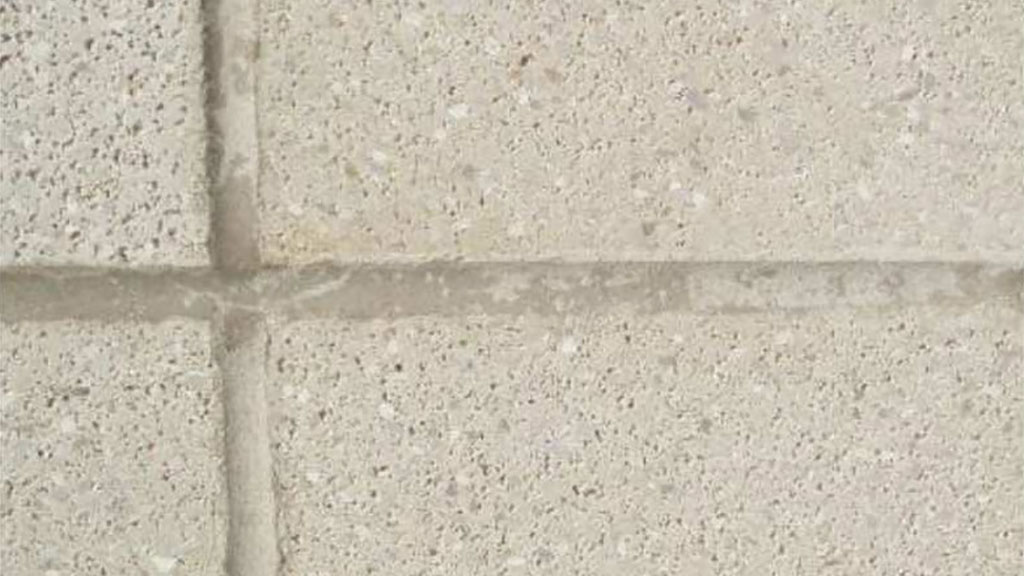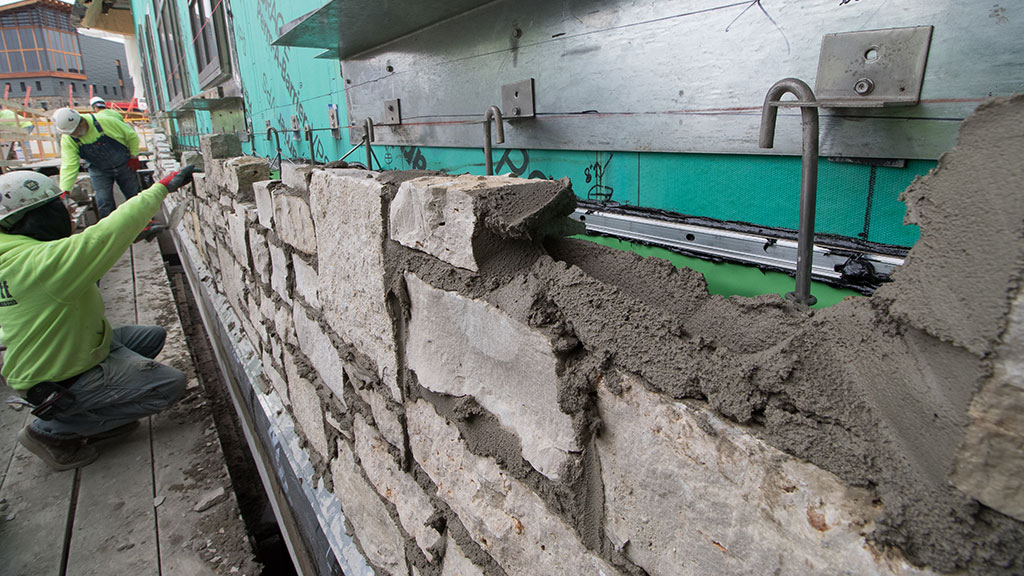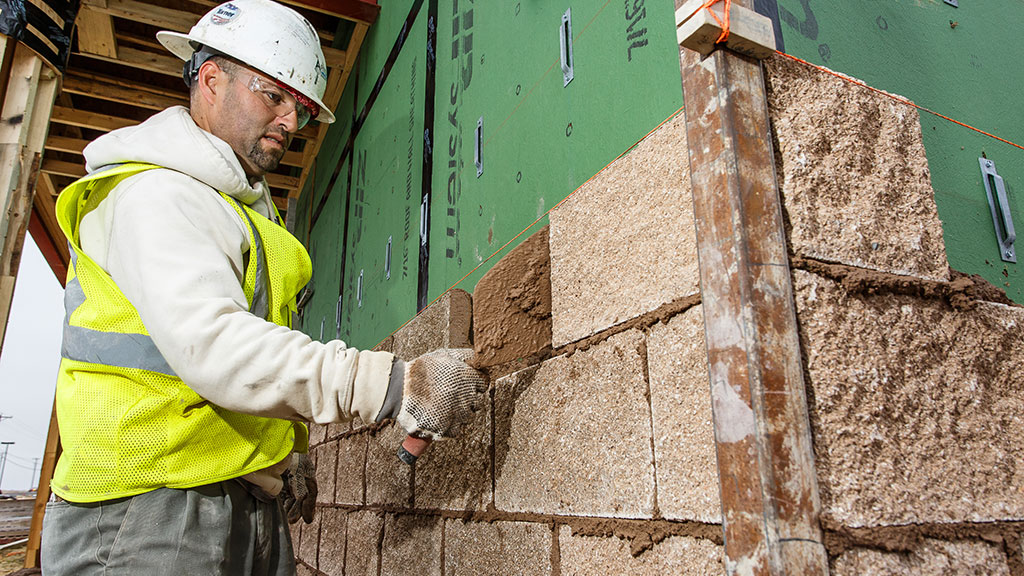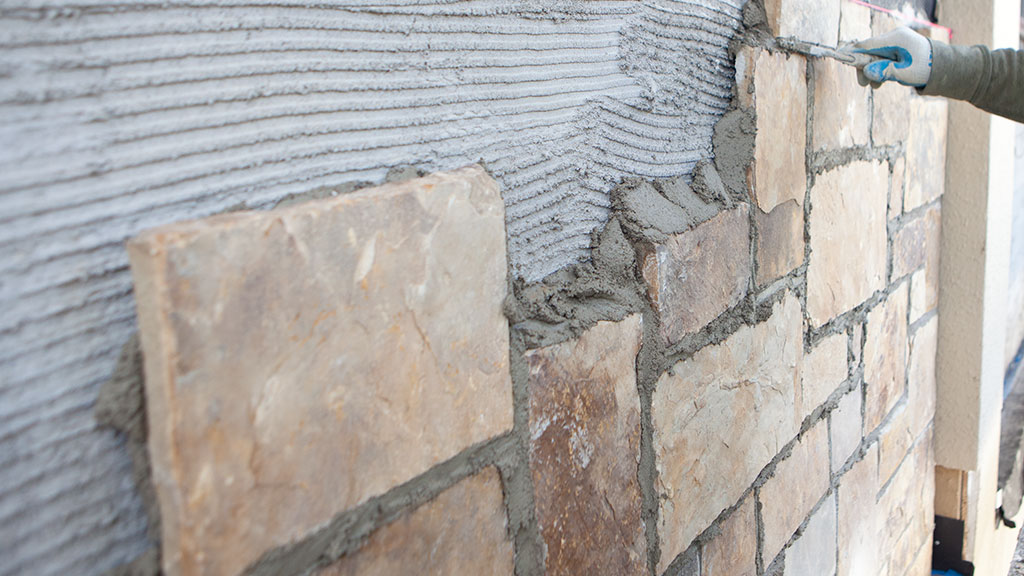
Surface mottling of a mortar joint.

Pre-blended mortar formulations for natural stone can be customized for hard and soft stone.

Figure 4 – Mortar joint with cementitious paste intact (left), and mortar joint chemically etched in washing process (right).

Pre-blended mortar produced with dry admixtures, pigment and integral water repellent ensures quality control and performance.

SPEC MIX Polymer Modified Adhered Veneer Mortar for superior shear bond strength.